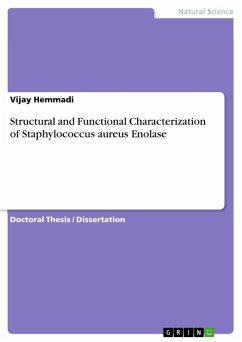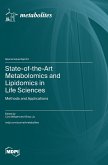Doctoral Thesis / Dissertation from the year 2022 in the subject Biology - Micro- and Molecular Biology, grade: 9.5, , course: PhD, language: English, abstract: The presence of metabolic enzymes like enolase on the surface of S. aureus has sparked considerable scientific debate. Enolase (rSaeno) is found in S. aureus as a fragile octamer and a robust dimer. The catalytic octamer resides in the cytoplasm and engages in energy metabolism, metal interchangeability, and averting the host's massive metal exploitation. In contrast, the membrane-bound dimer possesses a high affinity for host plasminogen and is involved in binding and immobilizing the host plasminogen on the S. aureus. The interaction of host plasminogen and rSaeno on the bacterial surface mediates the adherence of S. aureus to the host and subsequently arbitrates plasminogen activator-mediated activation of plasminogen. The binding of dimeric rSaeno to the kringle domain of plasminogen prevents ¿2-antiplasmin-mediated inhibition of plasmin. Enolase is a moonlighting protein that serves two unrelated functions in two separate cell compartments using two oligomeric conformations. Moonlighting proteins for pathogenicity saves a great deal of energy for the pathogen and allows the bacterial invasion system to remain incognito to the host. The pathogen develops an endless supply of host protease and disguises the host immune system by targeting copious host plasminogen. Although enolase is conserved across species, prominent structural variations can be utilized as potential competitive drug targets. As S. aureus employs numerous multifunctional proteins for pathological invasion, targeting enolase and other moonlighting proteins engaged in various steps of pathological invasion may serve as a potential means by which the pathological invasion of antibiotic-resistant S. aureus can be prevented.
Hinweis: Dieser Artikel kann nur an eine deutsche Lieferadresse ausgeliefert werden.
Hinweis: Dieser Artikel kann nur an eine deutsche Lieferadresse ausgeliefert werden.








